Can you draw a map of the Shire from memory while munching on Second Breakfast, or name all 12 of the actors who have played Doctor Who on television, including which seasons? When you get together with your friends, do you think a dip that looks like zombie guts would really tie everything together? There are cookbooks for that, and Chris-Rachael Oseland wrote all of them.
In the food writing world, getting a cookbook deal means you’ve arrived. But cookbooks by a first-time author rarely make a publishing house any profit. When Chris-Rachel shopped around the proposal for SteamDrunks: 101 Steampunk Cocktails and Mixed Drinks, she was greeted with stony silence or curt negative responses. Her niche is a far cry from the aspirational pseudo-perfection of food bloggers/lifestyle experts who tend to score deals these days; her books are about a very different kind of fantasy life.
So she published SteamDrunks herself, and then followed that up with Dining with the Doctor: The Unauthorized Whovian Cookbook, a title she’s currently revising for an expanded second edition. Since 2013, Austin, Texas-based Chris-Rachael has been a full-time freelance cookbook writer and food blogger; she’s taken on cookbooks inspired by Settlers of Catan (Wood for Sheep: The Unauthorized Settlers Cookbook) and J.R.R. Tolkien (An Unexpected Cookbook: The Unofficial Book of Hobbit Cookery). Plus she’s constantly posting new recipes to her website, Kitchen Overlord—like this one, “The Noshing Dead: Merle Dixon’s Edible Arm”, which features a sweet, yeasted dough filled with apples mascerated in sangria. Yes, it does look impressively like a severed arm. (An excerpt: “Elbows are kind of hard to make. They fold and pucker inwards, plus the skin on either side gently bulges while the actual external pivot point itself isn’t quite where you expect.”)
Chris-Rachael knows her audience and loves what she does. She also probably blazes through more food coloring than any other food writer in America. Since her carved-out spot in the cookbook world is so unique, Paste wanted to find out more about how she got where she is today. After a lively phone conversation and a recording app gone awry, she and I emailed back and forth; what follows is stitched together from both of those exchanges.
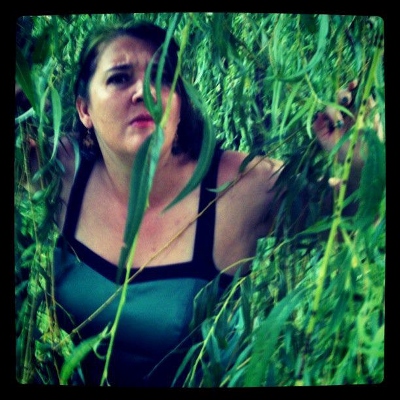
Paste: What makes a recipe a good geek recipe? You mentioned your disapproval of methods like the Star Wars Cookbook, which takes pretty normal recipes, gives them names with characters (the infamous Wookie Cookies) and calls it a day. What about your approach is different?
Chris-Rachael Oseland: A good geek recipe needs to be drawn from the fandom it represents.
Chelsea Monroe-Cassel and Sariann Lehrer, authors of A Feast of Ice and Fire , did lovely work creating dishes from the Game of Thrones books based on George R.R. Martin’s descriptions. Fans respect that.
Most fandoms don’t have such rich culinary source material. If you can’t draw on something referenced in your favorite show or book, use your imagination and channel your childhood Play-Doh skills to make something instantly recognizable. I’ve made huevos rancheros in the shape of Captain America’s shield, icebox cookies shaped like Deadpool’s belt buckle, a banana spread that looks like freshly spilled zombie guts.
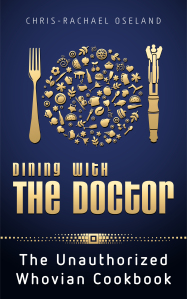
Paste: What geek things translate best to food?
CO: Look for simple geometric shapes. Deadpool’s belt buckle is a great example. You have a black circle surrounded by a red circle, with a red line going down the middle and a white dot on either side. I’ve made everything from sushi to cinnamon rolls using that. The TARDIS is just a big blue rectangle with two rows of optional smaller rectangles. The less literal your interpretation, the better it’ll look. Don’t waste a week making intricate fondant sculptures that no one will appreciate. Instead, go look at the Minimalist Superheroes infographic for inspiration and ask how you can apply those same principles to your favorite fandom.
Paste: Which of your geek cookbooks came first? Do you have a favorite?
CO: SteamDrunks: 101 Steampunk Cocktails and Mixed Drinks was my first cookbook. At the time, I had no idea it was the first step towards a new career. My favorite has to be Kitchen Overlord’s Illustrated Geek Cookbook. Artist Tom Gordon and I spent two years working on that one. I can honestly say there’s nothing like it out there, which is a pretty good feeling.

Paste: What’s your background as a follower and fan of geek books, movies, and TV series?
CO: I’m a second generation geek who grew up going to conventions with my mom, which means I don’t have the usual Geek Origin Story moment when a new book or movie suddenly expanded my universe. Fandom has always been part of my life. I grew up part of an active local Science Fiction group, my mother and I volunteered with our local Science Fiction convention, and we had a house full of science fiction and fantasy books. I might not have known the names of anyone on Nickelodeon, but I could trace X-Men genealogy from Corsair to Nate Summers or explain how Mystique and Magneto were related through their alternate universe granddaughter, Nocturne.
Paste: For the non-geeks out there, can you explain the role that crafting plays in geek culture?
CO: Crafting is how you separate the hardcore fans from the casual ones. If you buy a t-shirt to wear around as a personal billboard advertising that you like Doctor Who, that’s nice. I know I can talk to you. If you build a TARDIS replica—god damn, can I get your picture? And interview you? Do you have a website or any build videos I can follow? Making something with your own hands is how you gain a geek’s respect. You have to really love something to immerse yourself in it, learn all those details, and spend your weekends doing something instead of just talking about something.
This is really confusing to a lot of guys who come to cons for the first time. Out in the real world, money and the stuff you buy with it are status markers, so they’ll brag about the size of their comic collection or how many $100+ action figures they own. They get really pissed when the women completely ignore their possession-based peacocking but fawn over a guy wearing a homemade Littlefinger costume or carrying a steampunk gun that emits both steam and a visible light beam. Buying things doesn’t make you a unique snowflake to geeks. Making things does.
Food is a great intro craft for people. You already own most of the necessary tools and supplies, and even if you completely wreck it, the worst case scenario is you throw that experiment away and grab some fast food for dinner. It’s a low consequence, high reward activity. These days, when people increasingly don’t cook at home, they’re always impressed when you not only bring something you made yourself, but went to the trouble of making something special just for that event. Don’t get me wrong—I love my cookbooks, but no one eats like this every day. They’re really written to give people recipes for theme or watch parties.
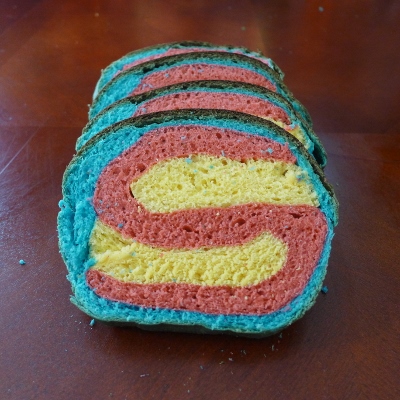
Paste: I love how you talk about watch parties being a significant social ritual, akin to the social and community function that religion plays in other cultures. Tell us about food’s role at a watch party, and how your cookbooks are a resource for people bringing foods to gatherings.
CO: I’m getting meta here, but in our increasingly secular society, pop culture is gradually filling the social void vacated by religion. People who haven’t set foot in a church in years will loyally get together every week to watch Game of Thrones, and when they do, they’ll bring some snacks or booze to share, because that’s what humans do.
If you think about it, pretty much every human gathering includes an element of exchanging or sharing food. First Date? Dinner. Wedding? Cake and booze. Baby Shower? Non-alcoholic drinks and more cake. Funeral: Casseroles for the bereaved. When you’re in college, you go out drinking with your friends. When you’re in your 30s, you go out for brunch or dinner. Food is a social glue, and what we choose to eat designates us versus them.
Nobody goes to a watch party thinking “I am now participating in a ritualistic activity that can be traced back through 5000 years of history.” You get together for fun. But again, because we’re human, that fun takes familiar shapes. You mingle and socialize as people trickle in, place any food in a designated spot to be admired, quietly observe the sermon/episode, enthusiastically discuss this week’s message/plot, and maybe eat or drink more before everyone goes home. What we’re passionate about might vary, but the way people show that passion is pretty consistent. It’s neat.
On a sociological level, bringing some dinner rolls shaped like Ood to a Doctor Who party or a loaf of Seed Cake to a Hobbit movie marathon is a way to not only get in the crafting cred we talked about earlier, but also designate that you belong here because you’re fully invested in the fandom, plus a generous person who is willing to share. Nobody is thinking about it on that level. They just happen to be free on Sunday night and want to watch a show they like with their friends. The rest just happens naturally without anyone telling you what to do.
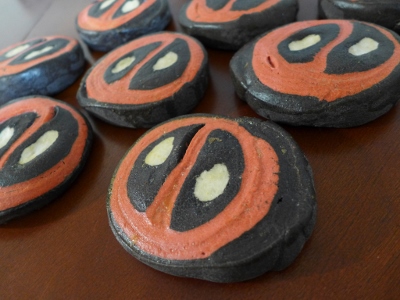
Paste: How does your blog, Kitchen Overlord, fit into what you do?
CO: Between SteamDrunks and Dining with the Doctor, my friends said I really needed an author website. I didn’t want to be the 9,786,429th writer to blog about the process of writing, so I thought I’d post weekly recipes from my current and upcoming cookbooks. From there, Kitchen Overlord took on a life of its own. It’s now home to over 300 original geeky recipes plus geeky kitchen gadget reviews and the occasional interview.
Paste: Do you ever feel like the mainstream food writing community does not respect what you do? Or do they just not get it?
CO: It’s really the later. I don’t get any hostility from mainstream food writers or publications, though they can be a bit patronizing. Most of them are simply surprised this is even a thing.
Paste: You struck your own path with getting your cookbooks out in the world. Is the readership of your blog your main source of cookbook buyers?
CO: To my surprise, no. Most people find my cookbooks when they Google “Doctor Who Cookbook” or “Hobbit Cookbook”. They’re not specifically looking for my work. They just want to throw a theme party and are curious whether there are any resources.
Paste: Your Hobbit-inspired cookbook is really intriguing from a historical standpoint—food history buffs would dig it, even if they weren’t Tolkien fans. Tell me a little about Tolkkien’s late Victorian inspiration for the foods of the Shire that you explore in An Unexpected Cookbook.
CO: Most people think of The Hobbit and Lord of the Rings as being medieval fantasy, but they’re actually rooted in the late Victorian era of Tolkien’s childhood and deeply influenced by the backdrop of global war in which he lived most of his adult life. Tolkien said he based the Shire in great part on his aunt’s farm in central England and the surrounding village, which had no cars and no train lines. He saw it as a peaceful, bucolic place untouched by the ravages of Industrialization and war, and really wanted to preserve something of that way of life in his writing before it entirely disappeared.

In honor of that, I spent a heck of a lot of time researching recipes and any food-related documents I could get my hands on for central England. Once I had far more information than I could realistically use, I put it through the filters Tolkien placed on the Shire; no new-world foods other than coffee, tobacco, and potatoes. That narrowed things down considerably, but left me with another issue—how far back into history should I go when eliminating “non-English” foods. After all, England was colonized by the Romans, who brought cabbages, peas, turnips, radishes, asparagus, garlic, onions, and leeks—all things we think of as English foods.
After way too much hand-wringing, I ended up drawing a line at the Crusades. I feel that Tolkien’s intent in limiting the Shire wasn’t to create a cuisine based on nothing but nettle soup and boiled potatoes, but to lovingly preserve English country life as it was before Industrialization and World War I changed everything, in his opinion, for the worse.
All together, An Unexpected Cookbook: The Unofficial Book of Hobbit Cookery took me about fourteen months to complete.
Paste: Wow, you have written a lot of cookbooks in a short period. How do you keep a work-life balance?
CO: I don’t. Wait, was I supposed to have a fun, can-do answer involving Red Bull and goat sacrifices? Man, I wish it was that easy. It’s an incredible amount of work, but every single day I’m grateful to have it. I follow a lot of older full-time writers I respect online, but in real life, I’m the only person I know who writes books for a living. I’m fully aware how lucky I am, and that’s a powerful motivation not to screw up this opportunity by slacking on my production schedule.
Paste: Do you eat a lot of geek recipes for dinner?
CO: That depends on where I am in the testing and photography schedule. It tends to be feast or famine. If I’m in editing mode, I mostly eat frozen food I made myself, usually in front of my computer while working. When I’m cooking and photographing the food, there’s usually way more than I can eat, so I’ll give anything that is room temperature and safe to the homeless people who camp under a couple nearby bridges.
Paste: What are you working on now?
CO: I’m juggling two projects at the moment. One is a gore-tastic horror cookbook full of recipes that look like human body parts. It’ll be nice and bloody for Walking Dead watch parties, Hannibal watch parties, or just something to serve when having friends over for a gory horror movie.
The other is a second edition of my Doctor Who cookbook, which I’ll be Kickstarting in April. I’m adding over 50 new recipes and re-photographing everything from the first edition to create something Whovians will be proud to have on their shelves.
Paste: What’s your pre-Kitchen Overlord professional background?
CO: On the geek cred side of things, I attended Clarion, the science fiction writer’s bootcamp. I can guarantee this is not what they had in mind when I was admitted. I also worked as a journalist in Louisville, Chicago, St. Louis, and Austin—because what else are you going to do with a MA in history? In the middle of it all I also had a gig as a restaurant reviewer in Chicago and St. Louis suburbs.
Paste: That’s such a moving target. I always like my newer stuff better than the old. CO: I was pretty darn proud of the Superman bread loaf. When you cut it, each slice has an “S” Crest. I also really love my flayed human corpse spread for zombie parties made from two kinds of crepes, two kinds of dips, and biscotti.
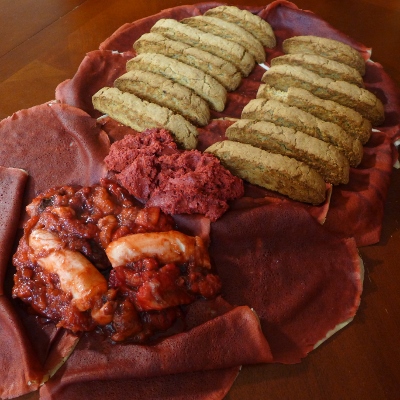
…
So there you go. It’s nice to know that there’s a cookbook writer who takes her work seriously, yet not too seriously. Chris-Rachael’s work reminds us that food sustains us in multiple ways—physical as well as social—and there’s room for every approach, including ones that strategically mimic a TARDIS booth.
Sara Bir is Paste’s food editor. She is a huge cookbook geek.